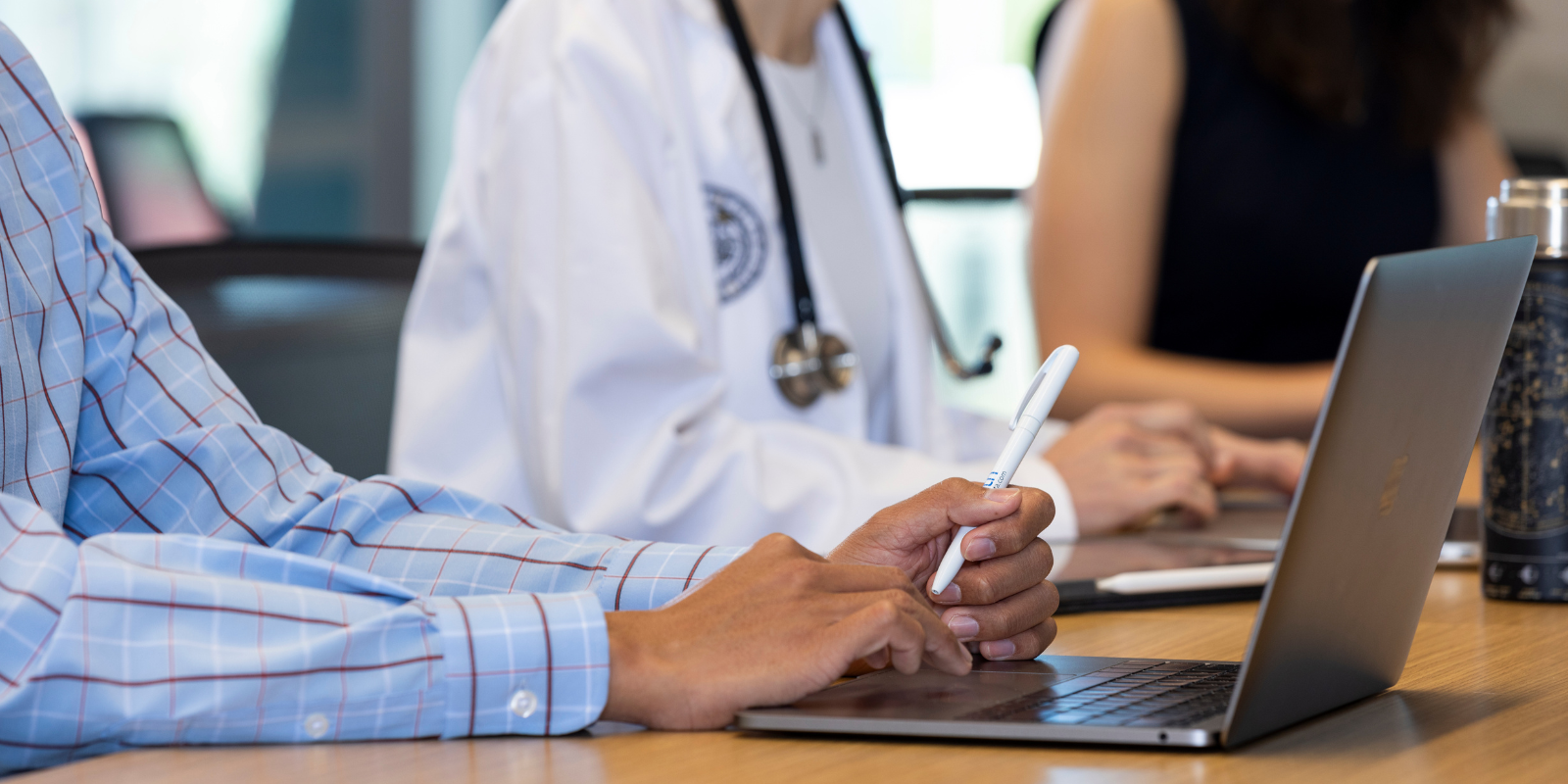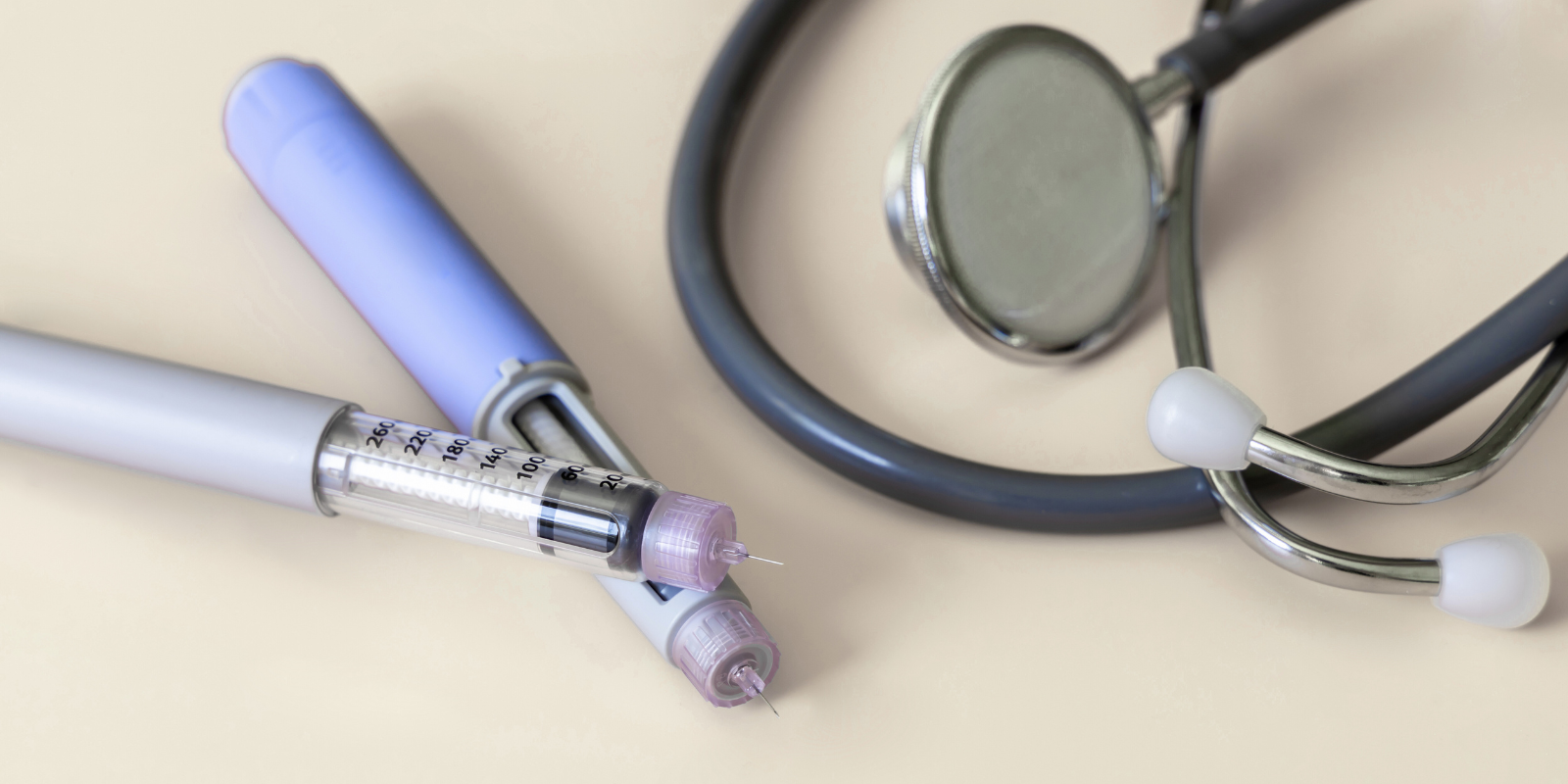In the original “Jurassic Park” movie, after the process of bringing dinosaurs back to life is explained to a team of consultants, one of them voices a warning: “Your scientists were so preoccupied with whether or not they could, they didn’t stop to think if they should.”
University of Colorado Department of Medicine faculty members will be asking the “should” question years before there’s an answer to “could.”
They’ve joined in a nationwide study of whether tiny, battery-powered electric devices and genetic material, swallowed in capsule form, could one day replace surgery or injections as treatments for metabolic diseases such as diabetes and obesity.
Matthew Wynia, MD, MPH, and Eric Campbell, PhD, will explore ethical issues surrounding the five-year research project, as well as how potential patients might react to these novel ingestible devices, while their colleagues elsewhere determine whether the technology will work.
Both are professors in the CU Division of General Internal Medicine, and both are medical ethicists at the Center for Bioethics and Humanities at the CU Anschutz Medical Campus, the center that offers ethics courses to CU Anschutz students. Wynia is the center’s director and previously developed ethics and patient-safety programs for the American Medical Association. Campbell is the center’s director of research.
‘Almost nothing like this’
Wynia says that, while the concept of proactive consideration of ethical, legal, and social implications of emerging technology has been around for about 25 years in the field of genomics, “for other technologies and drug development, there’s been almost nothing like this. It gets incorporated to some extent in health technology assessments in Europe, but we don’t really do that here.”
He adds: “We hardly ever think proactively about the ways in which novel technology can end up backfiring or harming people. With high-tech devices of all kinds, sometimes you can do everything right scientifically and yet still have it blow up in your face because you failed to notice an ethical or a social implication. And the way people think about things can make devices fail, even though they’re medically satisfactory.”
Wynia says he was introduced to the project while he was working as an ethics advisor on another initiative and found himself at dinner in San Diego at the same table as investigators from the Massachusetts Institute of Technology, which is leading the study. “We got to talking about next steps on this and I made my pitch.”
The size of a blueberry
In February, the U.S. Advanced Research Projects Agency for Health (ARPA-H) announced it would provide up to $65.6 million in funding for the project, nicknamed “Revolutionizing the Oral Route,” which seeks to investigate the use of sophisticated new oral devices to deliver therapies to treat metabolic disorders.
According to ARPA-H, metabolic diseases are on the rise in the United States. “Treating these chronic diseases currently requires daily injections, surgery, or expensive drugs. Recent innovations, such as continuous glucose monitoring and insulin pumps, have greatly lowered the burden on patients but can still be painful to use and can limit activity,” it says.
In the new “proof of concept” project, two pill-sized devices will be developed and tested – one to deliver messenger RNA (mRNA), genetic material that can program cells to make proteins; and the other, powered by a tiny battery and coated with electrodes, to deliver electrical current to cells of the stomach.
The MIT team previously tested capsules about the size of a blueberry that can reorient themselves inside the body and attach themselves to the stomach lining to inject their contents.
Little factories
The first device to be developed in Revolutionizing the Oral Route “would sense its location in the stomach and, when aligned, deliver mRNA directly into the gastrointestinal (GI) lining,” ARPA-H says. “The mRNA would then instruct cells to produce a therapeutic protein needed to treat a disease like diabetes. The second device would be an electroceutical that binds to the GI lining for a few weeks, electrically stimulating it to secrete the hormones that help manage hunger and satiety.”
The devices to be developed could be wirelessly remote controlled. After serving their purpose, they would be excreted from the body.
“This project is an acknowledgement of the fact that virtually everyone would rather take a pill than get a shot,” Wynia says.
“These are not pills that dissolve and get absorbed. They are little factories that you swallow, and they attach inside your gut, and either stimulate your gut with a little charge so you wouldn't be as hungry, to treat obesity, or it could have little claws and it grips into the stomach lining or the intestinal lining and injects therapeutics through these little claws.”
In their proposal, the MIT team said their goal is to proceed to clinical trials in the fifth and final year of the project. The oral-therapy technology might prove to be effective for other conditions as well, they said.
Not waiting to solve a problem
Wynia says that among the questions ARPA-H asks in awarding funding is: “How might this research be misperceived or misused? And how can we be sure that we are doing research that’s worthy of public trust? So that’s our role in this. That’s our question.”
Campbell says: “Our goal is to understand the potential issues of ethics and public perception in advance, before this is ready to go through the regulatory pathway to market, so that you’re not waiting to solve a problem then. We’re the telescope that’s looking forward five years to find these issues now and begin to address them.”
Wynia says he, Campbell, and their team “want to stay open minded about concerns or worries that might occur,” keeping in mind that not all technological details of the new devices have been determined yet.
“At the same time, there are some obvious questions,” Wynia adds. “For example, these types of devices could be controlled from the outside world, meaning there could be an app on someone’s phone telling these devices what to do. Could that app be hacked? Will it be collecting data on your innermost life? Also, some of these devices will have a battery in them. They may have ingredients with an impact on the environment that will end up in the sewer. And you could also imagine that these devices might be very expensive. Who will have access to them?”
Wynia and Campbell say their work on the project will begin with a scoping review of literature on ethical and social concerns raised about other, similar devices in the past. They’ll interview scientists with background in the field to spot potential issues with the research. They’ll find out if physicians have concerns. They’ll talk to potential patients to learn what they think about the technology and ask, as Campbell puts it, “How would you feel if you knew that somebody was controlling how hungry you're going to feel?” And they’ll do a national survey of the public.
Finally, they will combine their data using an expert-consensus methodology called Delphi, a way to aggregate diverse expert opinions into a statistical consensus on a topic, leading to recommendations. The results could be used in a number of ways, Wynia says, including how to design a clinical trial and how to regulate the resulting devices.
A Goldilocks balance
A key issue the team will examine is equity of access to these new treatments. As an example, Campbell cites Ozempic, Wegovy, and similar GLP-1 drugs, which have been popularized as miracle weight-loss treatments by celebrities and social-media influencers. Yet Ozempic is only approved as a treatment for Type 2 diabetes, and Wegovy is only approved for use to treat obesity if it is causing weight-related health conditions.
“People with diabetes are having trouble finding Ozempic because it’s now being used for weight loss,” Campbell says. “That raises a real ethical question: Should doctors be prescribing something for patients for weight loss and then that drug is not available for their patients with diabetes? And should it be prescribed for people who just want to go from a size 5 to a size 2, or should it only be used by people whose obesity is causing medical problems? Those are questions that should have been addressed when those drugs were being developed but weren’t.”
“The goal here is optimal use of this technology, not maximal use and not minimal use,” Wynia says of the new oral-treatment study. “If it works, everyone who is appropriate should get it, and people who are not appropriate should not. We’re trying to get to a Goldilocks balance at the end.”
Photo at top: From left, Eric Campbell, PhD, and Matthew Wynia, MD, MPH, in front of the Fulginiti Pavilion for Bioethics and Humanities on the CU Anschutz Medical Campus. Photo by Mark Harden | CU Department of Medicine.



